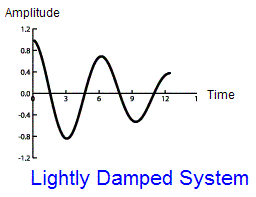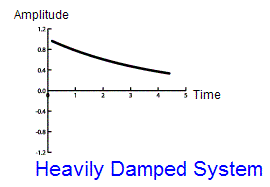Damping Any completely isolated system exhibiting simple harmonic motion will carry on swinging/vibrating for ever! It conserves mechanical energy. There will be continuous interchange of kinetic to potential energy and back again. For example,
BUT in the real world it is impossible to isolate the system - friction with supports and surrounding air molecules drains energy from the swinging/bouncing system into the environment - the total mechanical energy left in the system therefore gradually decreases. Energy is still conserved! BUT energy within the system is being drained to another place. Damping is the term used to describe a means by which energy drain from the oscillating system can be occomplished. Remember 'damping' is just a euphemism for frictional forces like air-resistance. Once there is 'damping', the system is no longer conservative. SHM systems under dampingDamping changes the behaviour of S.H.M. systems. Certain features of the oscillation (amplitude etc.) are dependent on the extent of damping.
|
Follow me...
|


 In a spring-mass system,
the the energy conversion is between kinetic energy and the potential
energy stored in a stretched/compressed spring.
In a spring-mass system,
the the energy conversion is between kinetic energy and the potential
energy stored in a stretched/compressed spring. 




